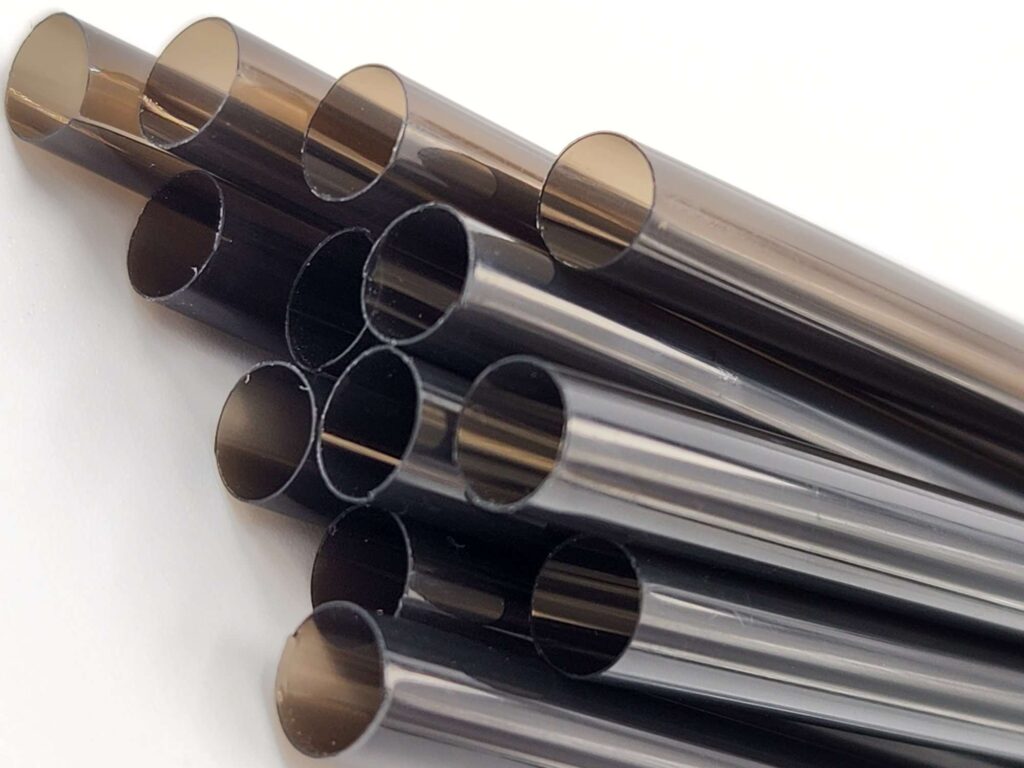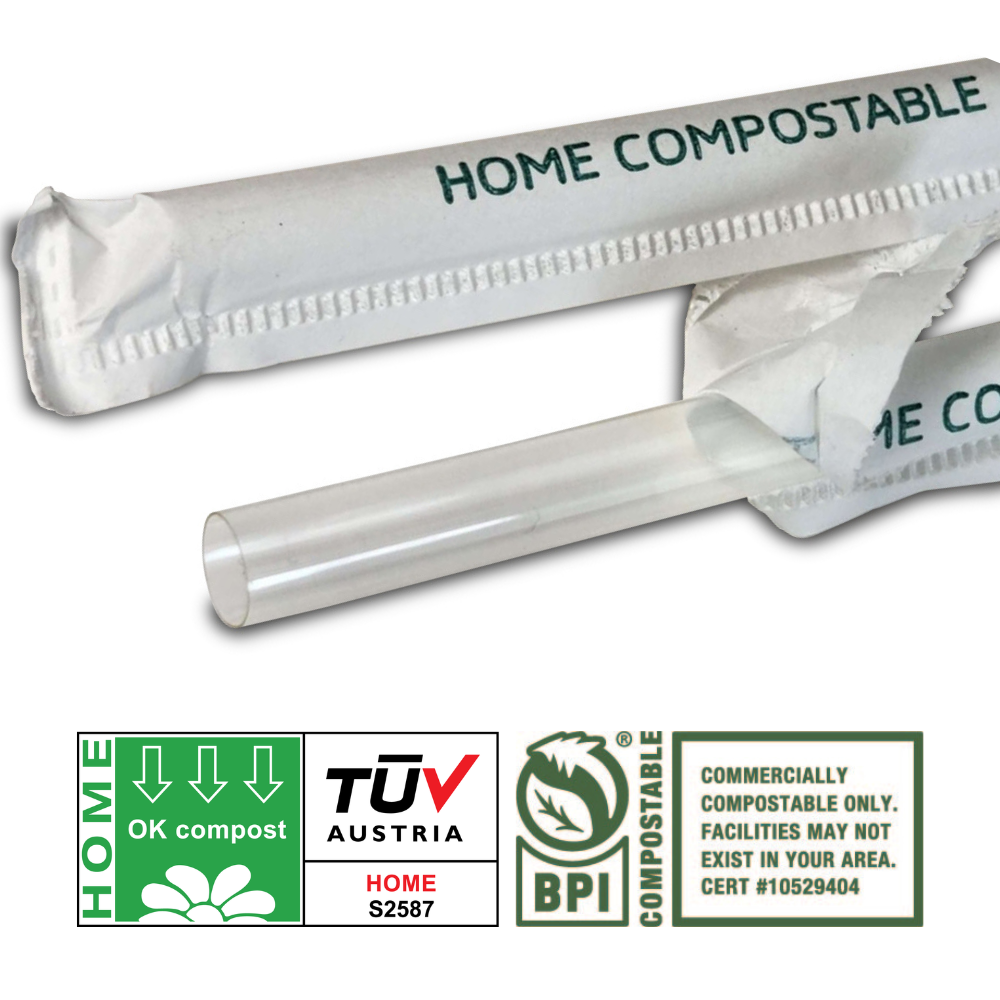Introduction
In recent years, there has been a growing concern about the environmental impact of single-use plastic straws. As a result, many restaurants are now looking for alternatives that are more sustainable and eco-friendly. Biodegradable straws have emerged as a popular choice, as they offer a solution to the problem of plastic waste.
Biodegradable straws are made from materials that can break down naturally over time, without causing harm to the environment. They are designed to decompose into natural elements, such as water, carbon dioxide, and biomass, through the action of microorganisms. This makes them a much more sustainable option compared to traditional plastic straws, which can take hundreds of years to degrade.
The use of biodegradable straws in restaurants is not only beneficial for the environment but also for the reputation of the establishment. Many consumers are now actively seeking out eco-friendly options when dining out, and using biodegradable straws can help restaurants attract and retain these environmentally conscious customers.
When choosing biodegradable straws for restaurants, there are several factors to consider. Firstly, the material used should be certified as biodegradable and compostable. It is also important to consider the durability and functionality of the straws, as they should be able to withstand liquids without becoming soggy or disintegrating. Additionally, the cost and availability of the straws should be taken into account, as well as any specific requirements or regulations in the local area.
In this article, we will provide a comprehensive review of the top 5 biodegradable straws for restaurants in 2023. We will discuss the different types of biodegradable straws available, such as those made from PHA (polyhydroxyalkanoates) and home-compostable cellulose acetate or wood pulp (KonzaWare). We will compare the pros and cons of each type, and provide tips for implementing biodegradable straws in restaurants. By the end of this article, you will have all the information you need to make an informed decision on the best biodegradable straws for your restaurant.
What are biodegradable straws?
Biodegradable straws are a type of straw that is designed to break down naturally and decompose over time. Unlike traditional plastic straws, which can take hundreds of years to degrade, eco-friendly straws are made from materials that are more environmentally friendly and can break down in a shorter period of time.
There are several different types of biodegradable drinking straws available on the market. Some of the most common materials used to make biodegradable straws include polylactic acid (PLA), polyhydroxyalkanoates (PHA), and cellulose acetate made from wood pulp. These materials are derived from renewable resources making them a more sustainable alternative to traditional plastic straws.
Sustainable straws can come in various shapes, sizes, and colors, including straight straws, bendy straws, and even spoon straws. They can be used for a wide range of beverages, including warm and cold drinks, and are suitable for use in restaurants, cafes, bars, and other food service establishments.
One of the key benefits of using biodegradable drinking straws in restaurants is their reduced impact on the environment. Traditional plastic straws are a major contributor to plastic pollution, with millions of straws ending up in landfills and oceans each year. By switching to biodegradable straws, restaurants can help reduce their carbon footprint and minimize their contribution to plastic waste.
In addition to being more environmentally friendly, biodegradable straws also offer a safer and healthier option for consumers. Traditional plastic straws can contain harmful chemicals such as BPA, which can leach into beverages and pose a risk to human health. Biodegradable drinking straws, on the other hand, are free from these chemicals and provide a safer drinking experience.
Overall, biodegradable straws are a sustainable and responsible choice for restaurants looking to reduce their environmental impact. By choosing biodegradable straws, restaurants can demonstrate their commitment to sustainability and provide their customers with a more eco-friendly dining experience.
Importance of using sustainable straws in restaurants
The use of biodegradable drinking straws in restaurants has become increasingly important in recent years due to growing concerns about the environmental impact of single-use plastic straws. Traditional plastic straws are not biodegradable and can take hundreds of years to break down, contributing to pollution and harming marine life.
By switching to biodegradable straws, restaurants can significantly reduce their carbon footprint and contribute to a more sustainable future. These straws are made from materials that can naturally decompose over time, such as plant-based plastics, paper, or bamboo. They break down into organic matter, reducing the amount of waste that ends up in landfills or oceans.
One of the main benefits of using biodegradable drinking straws is that they do not release harmful chemicals or microplastics into the environment as they break down. This is particularly important for marine ecosystems, as plastic pollution has been shown to have devastating effects on marine life, including entanglement and ingestion.
Furthermore, using biodegradable straws can also enhance a restaurant’s brand image and attract environmentally conscious customers. With the increasing demand for sustainable practices, customers are more likely to choose restaurants that prioritize eco-friendly alternatives. By demonstrating a commitment to reducing plastic waste, restaurants can differentiate themselves from competitors and build a loyal customer base.
When choosing biodegradable straws for restaurants, it is important to consider factors such as durability, functionality, and cost. Some biodegradable straws may not hold up well in warm beverages or may become soggy too quickly, affecting the overall dining experience. Additionally, the cost of biodegradable straws may be higher than traditional plastic straws, so restaurants need to weigh the environmental benefits against the financial implications.
In conclusion, the use of biodegradable straws in restaurants is crucial for reducing plastic waste and protecting the environment. By making the switch to biodegradable alternatives, restaurants can contribute to a more sustainable future, attract environmentally conscious customers, and enhance their brand image. However, it is important to carefully consider the specific needs and requirements of the restaurant when choosing biodegradable straws.

Factors to consider when choosing eco-friendly straws for restaurants
When choosing eco-friendly drinking straws for your restaurant, there are several important factors to consider. These factors will help you make an informed decision and ensure that the straws you choose are not only environmentally friendly but also practical for your restaurant’s needs.
1. Material:
There are various materials used to make biodegradable straws, including PLA (polylactic acid), PHA (polyhydroxyalkanoates), and Cellulose Acetate made from sustainable wood pulp. Each material has its own advantages and disadvantages, so it’s important to consider factors such as durability, flexibility, and heat resistance when selecting the material for your straws.
2. Durability:
While earth-friendly straws are designed to break down naturally over time, it’s still important to choose straws that are durable enough to withstand regular use. Look for straws that are sturdy and won’t easily break or become soggy when in contact with liquids.
3. Compatibility:
Consider the types of beverages your restaurant serves and choose straws that are compatible with them. Some disposable compostable straws may not be suitable for hot beverages or thick drinks, so it’s important to choose straws that can withstand the temperature and viscosity of your beverages.
4. Cost:
The cost of biodegradable straws can vary depending on the material and brand. Consider your budget and choose straws that are cost-effective for your restaurant. It’s also worth considering the potential cost savings in terms of waste management and the environmental impact that biodegradable straws can offer in the long run.
5. Certification:
Look for biodegradable straws that are certified by reputable organizations, such as the Biodegradable Products Institute (BPI) or the European Bioplastics Association (EUBP). These certifications ensure that the straws meet certain standards for biodegradability and compostability.
By considering these factors, you can choose the best biodegradable straws for your restaurant that align with your sustainability goals and meet the practical needs of your establishment. Remember to also educate your staff and customers about the benefits of using biodegradable straws and how to properly dispose of them to maximize their environmental impact.
Top 5 biodegradable straws for restaurants in 2023
When it comes to choosing the best environmentally friendly straws for your restaurant, there are several options available in the market. To help you make an informed decision, we have compiled a list of the top 5 biodegradable straws for restaurants in 2023.
1. KonzaWare straws: KonzaWare biodegradable straws made from cellulose acetate are a unique and innovative option for restaurants. They are made from sustainable wood pulp and can be consumed along with the beverage. KonzaWare straws are not only biodegradable, but they are also home-compostable. They look and feel like regular plastic straws, yet can be discarded in a home compost environment where they disintegrate in weeks to create healthy soil for plant life. They are suitable for both warm and cold beverages and are a great choice for restaurants looking to offer a unique and sustainable option to their customers.
2. Paper straws: Paper straws are one of the most popular and widely used earth-friendly straws in the restaurant industry. They are made from sustainable materials such as paper and are compostable, making them an eco-friendly choice. Paper straws are sturdy and can withstand liquids for a reasonable amount of time, making them suitable for various beverages.
Bamboo straws:
Bamboo straws are another excellent option for restaurants looking for biodegradable alternatives. They are made from natural bamboo, which is a renewable resource. Bamboo straws are durable, reusable, and can be easily cleaned. They add a unique and natural touch to the dining experience and are suitable for both hot and cold beverages.
Wheat straws:
Wheat straws are gaining popularity as a biodegradable alternative to plastic straws. They are made from the stems of wheat plants, which are usually discarded after the wheat grains are harvested. Wheat straws are compostable, sturdy, and can last for a reasonable amount of time in beverages. They are a great choice for restaurants looking for a sustainable and eco-friendly option.
PLA straws:
PLA (polylactic acid) straws are made from renewable resources such as cornstarch or sugarcane. They are compostable and break down into natural elements over time. PLA straws are sturdy and can withstand liquids for a reasonable amount of time. They are a choice for restaurants looking for a biodegradable alternative to plastic straws.
Review of home compostable cellulose acetate straws
One of the top sustainable drinking straw options for restaurants in 2023 is the home compostable cellulose acetate straw. These straws are made from a plant-based material called cellulose acetate, which is derived from sustainable wood pulp. They are designed to break down naturally in home composting systems, making them the #1 eco-friendly biodegradable straw for restaurants.
Home compostable cellulose acetate straws have gained popularity due to their ability to biodegrade in a relatively short period of time. Unlike traditional plastic straws that can take hundreds of years to decompose, these straws can break down within a few weeks in a home compost environment. This makes them a more sustainable alternative for restaurants looking to reduce their environmental impact.
In terms of performance, home compostable cellulose acetate straws are comparable to traditional plastic straws. They are sturdy and can withstand liquids without becoming soggy or disintegrating. They also come in various sizes, shapes, and colors, allowing restaurants to cater to different types of beverages and customer preferences.
One of the key advantages of home compostable cellulose acetate straws is that they can be composted at home, eliminating the need for specialized composting facilities. They also have the ability to break down naturally in soil and water. This means that even if these straws end up in landfills or oceans, they will eventually decompose without leaving behind harmful microplastics or contributing to pollution. This makes them a convenient option for both restaurants and consumers. This also diverts waste from landfills. Therefore, it is essential for restaurants to educate their staff and customers on proper disposal methods to ensure the straws are composted correctly.
KonzaWare straws are certified by 2 international governing bodies: TUV Austria with the OK compost HOME certification and by BPI.
Overall, home compostable cellulose acetate KonzaWare straws are a great choice for restaurants looking to transition to more sustainable alternatives. They offer the convenience and performance of traditional plastic straws while being environmentally friendly. By choosing these straws, restaurants can contribute to reducing plastic waste and promoting a greener future.
Comparison of the two types of home compostable straws
When it comes to biodegradable straws for restaurants, there are two main types that are commonly used: biodegradable straws made from PHA (polyhydroxyalkanoates) and home-compostable cellulose acetate straws. In this section, we will compare these two types of straws to help you make an informed decision for your restaurant.
Eco-friendly straws made from PHA are derived from renewable resources such as plant oils and are designed to break down naturally in the environment. These straws are known for their durability and can withstand warm and cold beverages without losing their shape or integrity. They are also resistant to melting and do not release any harmful chemicals when decomposing. However, it is important to note that PHA straws are a bit more costly and can sometimes become brittle in use. Some complain that PHA straws have a weird feel to the lips.
On the other hand, home-compostable cellulose acetate straws are made from plant-based materials and can be composted in a home composting system. These straws are also durable and can withstand various temperatures. They are a great option for restaurants that prioritize convenience and want to offer a sustainable alternative to traditional plastic straws. However, it is important to ensure that the straws are disposed of properly in a composting system to ensure their full biodegradability.
When comparing the two types of earth-friendly straws, it is important to consider factors such as availability, cost, and disposal options. PHA straws may be more readily available in certain regions and may require a higher initial investment compared to cellulose acetate straws. On the other hand, cellulose acetate straws provide consumers with the sipping experience that they are already used to when using regular plastic straws.
Ultimately, the choice between PHA and cellulose acetate straws will depend on your restaurant’s specific costs, needs, and priorities. It is important to consider factors such as local composting infrastructure, customer preferences, and budget when making a decision. Whichever type of biodegradable straw you choose, implementing them in your restaurant can be a significant step towards reducing plastic waste and promoting sustainability.
Tips for implementing earth-friendly straws in restaurants
Implementing biodegradable straws in restaurants is a great step towards reducing plastic waste and promoting sustainability. Here are some tips to help restaurants successfully transition to using biodegradable straws:
Research and choose the right type of biodegradable straw:
As mentioned in the previous sections, there are different types of sustainable drinking straws available, such as home-compostable cellulose acetate. It is important to research and choose the type that best suits your restaurant’s needs and values.
Educate staff and customers:
Train your staff about the importance of using eco-friendly straws and how to properly dispose of them. Additionally, educate your customers about the switch to eco-friendly straws and the reasons behind it. Display signage or provide information on your menu or website to create awareness.
Communicate with suppliers:
Ensure that your suppliers are aware of your preference for biodegradable straws and that they provide you with the appropriate options. Regularly communicate with them to ensure a steady supply of biodegradable straws.
Update menus and marketing materials:
Update your menus and marketing materials to highlight the use of biodegradable drinking straws. This can help create a positive image for your restaurant and attract environmentally conscious customers.
Proper disposal and recycling:
Provide clearly labeled bins for customers to dispose of their used biodegradable straws. Make sure these bins are easily accessible and regularly emptied. If possible, consider partnering with local recycling facilities to ensure proper disposal and recycling of the straws.
Monitor and evaluate:
Keep track of the usage and feedback on the biodegradable straws. Monitor their performance, durability, and customer satisfaction. This will help you make any necessary adjustments and improvements in the future.
7. Share your efforts:
Share your commitment to using biodegradable straws on your social media platforms and website. This can help raise awareness and inspire other restaurants to make the switch as well.
By following these tips, restaurants can successfully implement sustainable drinking straws and contribute to a more sustainable future. It is important to remember that the switch to biodegradable straws is just one step towards reducing plastic waste, and restaurants should continue to explore other eco-friendly alternatives in their operations.
X. Conclusion
In conclusion, the use of environmentally friendly drinking straws in restaurants is becoming increasingly important as more people are becoming aware of the environmental impact of single-use plastics. By choosing biodegradable straws, restaurants can contribute to reducing plastic waste and protecting the planet.
When selecting sustainable drinking straws for your restaurant, there are several factors to consider. These include the material used, the durability and functionality of the straws, and the cost. It is also important to ensure that the straws are certified as biodegradable and meet any local regulations or standards.
Based on our research and reviews, we have identified the top 5 biodegradable straws for restaurants in 2023. These include biodegradable straws made from home compostable cellulose acetate straws, which are made from renewable plant-based material and can be composted at home.
Both types of biodegradable straws have their advantages and disadvantages, and the choice ultimately depends on the specific needs and preferences of your restaurant. It is important to consider factors such as durability, functionality, and cost when making your decision.
Implementing biodegradable straws in your restaurant can be a simple and effective way to reduce plastic waste. However, it is important to educate your staff and customers about the benefits of using biodegradable straws and provide clear instructions on how to dispose of them properly.
In conclusion, by choosing the best biodegradable straws for your restaurant, you can make a positive impact on the environment and show your commitment to sustainability. So, why wait? Start making the switch to biodegradable straws today and join the movement toward a greener future.






